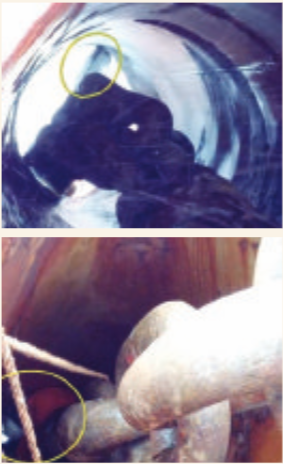202104 Poor risk analysis for stuck anchor results in fatality
As edited from TSIB (Singapore) report MIB/MAI/CAS.013
A bulk carrier in ballast weighed the port anchor and departed the anchorage for a sea passage. As the anchor came into view, it was discovered that the flukes were not positioned properly. Heaving was stopped, but not before one of the flukes entered the hawsepipe and became stuck. The anchor was secured in that position and the vessel left the anchorage for the sea passage.
The next day work started on trying to free and reposition the anchor. Several attempts were made to free it by lowering and heaving the anchor, but without success. Next, under the Master’s instructions and over the objections of the chief mate, a crew member was tasked to go over the side on a rope ladder while the vessel continued to make way. He was instructed to pass a mooring rope over the crown of the anchor, with a view to using the winches to pull the anchor free. This method also proved unsuccessful.
The next day, a support was welded inside the hawsepipe so that a hydraulic jack could be used to move the chain in the hope of dislodging the anchor fluke. A crew member entered the hawsepipe to position the hydraulic jack against the anchor chain and started operating the jack to move the anchor chain. Suddenly, the anchor chain moved with a jerk and pinned the man against the wall of the hawsepipe.
The victim was retrieved from the hawsepipe and found motionless. First aid was administered but the victim could not be revived. The vessel deviated from its passage in order to disembark the victim’s body.

Lessons Learned
- The early plan of sending a crew member over the side at the bow while underway was a clear signal that improvisational and unsafe practices were being employed.
- Stand your ground. In this case the chief mate was not in agreement with the practices used and refused to participate. The Master, uninhibited by the chief mate’s warnings, continued the various attempts that eventually cost the life of a crew member.
- When a new challenge arises it is best to use cool heads to analyse all risks and benefits. In this instance it would have been evident that sending a man over the side at the bow while underway or having someone enter the hawsepipe were dangerous acts that could not be justified.
